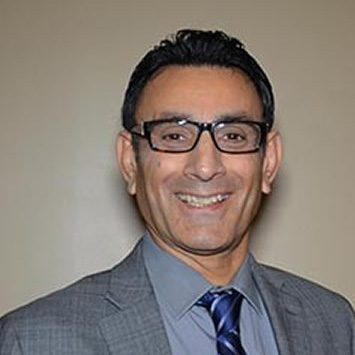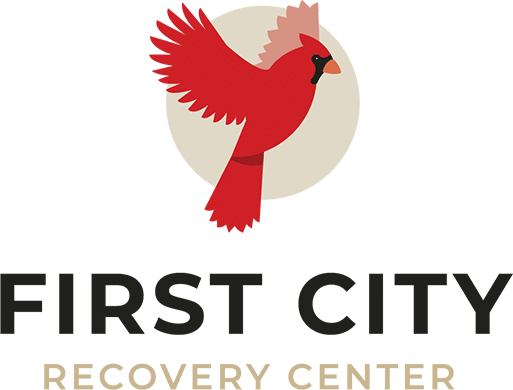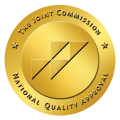Trauma Addiction Recovery in Kokomo, Indiana
Experiencing trauma can alter your entire life, but it’s important to make sure that the traumatic alterations in your life lead you to post-traumatic growth. Many people who go through trauma experience mental illness, along with stress and confusion. For example, many people who experience trauma later develop depression, anxiety, PTSD, a panic disorder, or other fear-related disorders.
Such psychological struggles can make a person reevaluate his or her views on people, the world, and life itself. Although the physical and mental struggles and obstacles that a person experiences after trauma can be daunting, they can cause a person to experience positive and transformative self-growth. To turn your traumatic life lows into highs, you should try to experience post-traumatic growth.
Table of Contents
ToggleWhat is Post-Traumatic Growth?
Post-traumatic growth (PTG) is a theory that claims that people who go through psychological struggle following adversity often see positive growth afterward. Psychologists Richard Tedeschi Ph.D. and Lawrence Calhoun Ph.D. developed the post-traumatic growth theory in the mid-1990s.
People who experience post-traumatic growth tend to develop new views about the world, themselves, and others. People that experience post-traumatic growth also tend to gain clarity on what they want out of life. Going through post-traumatic growth even causes many people to learn how to better function in life.
Post-Traumatic Growth vs. Resiliency
While post-traumatic growth may sound similar to resiliency, the two constructs are quite different from one another. Resiliency is the personal ability to bounce back from negative circumstances in life. Post-traumatic growth is when a person that does not have a resilient personality experiences trauma that causes that person to struggle psychologically and question his or her core beliefs until he or she eventually develops personal growth.
In a way, the type of person that is resilient is the opposite of the type of person that tends to experience post-traumatic growth. This is because people that experience post-traumatic growth are usually fearful, anxious, and non-resilient people prior to experiencing trauma. In fact, it is the anxious and fearful nature of such people that causes them to experience such massive amounts of personal growth and rediscovery after going through trauma.
People that are already resilient, will not experience post-traumatic growth after going through trauma. This is because the trauma will not rock a resilient person to the core in the same way that it would a non-resilient person. Thus, resilient people are also less likely to question their entire world view or experience a mental illness after experiencing trauma.
This means that the ultimate level of self-growth that a resilient person will develop after going through trauma will be much less than the person that has a predisposition to experiencing post-traumatic growth.
The Post-Traumatic Growth Inventory
To assess and scale post-traumatic growth, Tedeschi and Calhoun created the Post-Traumatic Growth Inventory (PTGI). The Post-Traumatic Growth Inventory is a 21-scale item based on the five-factor Tedeschi model. This means that within the PTGI, 21 different statements are rated on a scale between 0 and 5. Each of these 21 item statements represents personal growth changes that fit into one of the five-factor categories.
The five factors that each statement within the PTGI is based on are the following.
- Factor 1: Relating to Others
- Factor 2: New Possibilities
- Factor 3: Personal Strength
- Factor 4: Spiritual Enhancement
- Factor 5: Appreciation
The Post-Traumatic Growth Inventory Rating Scale
When you rate one of the 21 item statements in the PTGI based on these five factors, a rating of a 0 means that you did not experience this change as a result of your crisis. A rating of 1 means that you experienced this change to a very small degree as a result of your crisis. A rating of 2 means that you experienced this change to a small degree as a result of your crisis.
A rating of 3 means that you experienced this change to a moderate degree as a result of your crisis. A rating of 4 means that you experienced this change to a great degree as a result of your crisis. A rating of 5 means that you experienced this change to a very great degree as a result of your crisis.
Examples of statements that you would score on a scale of 0 to 5 on the Post-Traumatic Growth Inventory include: “I changed my priorities about what is important in life,” “I have a greater feeling of self-reliance,” and “I have a greater sense of closeness with others.”
While the Post-Traumatic Growth Inventory is one of the most valid ways to assess personal growth, researchers still question the reliability of the inventory due to any biases or delusions that some people may have about themselves when taking the assessment.
Traits That Make Someone More Likely to Experience Post-Traumatic Growth
Like we briefly mentioned earlier when comparing PTG to resiliency, certain people have a predisposition to experiencing post-traumatic growth. For example, research has shown that people with the RGS2 gene are more likely to experience post-traumatic growth after trauma than other people.
The RGS2 gene is linked to fear disorders, PTSD, panic disorders, and anxiety. This means that people that are more fearful and anxious are more likely to experience post-traumatic growth after experiencing trauma. More fearful and anxious people do not tend to also be resilient. As a result, resiliency is not a trait that people that have a predisposition to experiencing PTG tend to have.
Despite being fearful and anxious, people that have a predisposition to experiencing PTG are also optimistic, open, and extroverted. While this may seem ironic, it is believed that this more optimistic, open, and extroverted side of some fearful and anxious people is what allows them to begin questioning their world views and beliefs.
To make things clear though, not every person that is optimistic, open, and extraverted is also fearful and anxious. On top of that, not every person that is anxious and fearful is also optimistic, open, and extroverted.
Children under the age of 8 don’t typically tend to experience post-traumatic growth after trauma. This is because they lack the cognitive ability to do so. In fact, people that are in their late teens and early 20s tend to experience post-traumatic growth the most. This is because people in that age range are at a point in their lives where they are the most open to the idea of questioning their worldview. Women also tend to experience PTG more than men.
Post-Traumatic Growth Symptoms
Common post-traumatic growth symptoms include an improvement in your interpersonal relationships, enhanced self-perception and self-acceptance, and an altered viewpoint of the meaning of life.
Other post-traumatic growth symptoms include:
- Increased optimism
- Increase in relatability
- Heightened self-motivation
- Looking forward to the future
- Greater self-expression and social connectivity
Forms of Therapy That Help Produce Post-Traumatic Growth
When people experience trauma in their lives, they are often sent to receive therapy to deal with it. While there is no one specific form of therapy that is associated with post-traumatic growth, psychologists have found that these forms of therapy are the best at cultivating PTG within trauma patients.
Reality Therapy
Reality therapy aims to provide patients with a realistic viewpoint of who they are, where they are in life, and where they need to go. Goal orientation is a tool that therapists use in reality therapy. Therapists that conduct reality therapy try to be as objective as possible.
Accelerated Resolution Therapy
Accelerated resolution therapy (ART) is a form of therapy that combines parts of cognitive therapy with solution-focused emotional control. Therapists use ART to help treat people that have PTSD, depression, or emotional issues.
Therapists also treat people that have gone through trauma with accelerated resolution therapy. Therapists use exercises such as EMDR, voluntary memory replacement, guided imagery, and hypnotherapy in ART therapy sessions.
Body-Mind Psychotherapy
Body-mind psychotherapy is a form of therapy that uses both the psychosomatic and cognitive approaches. Body-mind therapy uses parts of CBT, homeostasis, and motor development and combines it with mindfulness, relaxation, and sensory awareness. Therapists use body-mind therapy to help treat survivors of trauma.
Use First City Recovery Center to Help You Grow
At First City Recovery Center, we know the long road of stress and mental illness that trauma can put you on. All the struggles that you dealt with after experiencing trauma should not be in vain. Receive therapy that can help you turn your traumatic experience into post-traumatic growth here at First City Recovery Center. To learn more about First City Recovery Center and the services that we provide, feel free to contact us anytime!

MD, Psychiatrist
Dr. Vahid Osman, MD is a psychiatry specialist in Indianapolis, IN.
Dr. Osman completed a residency at Austin State Hospital. He has over 32 years of experience in Psychiatry & Behavioral Health. He is board certified by the American Board of Psychiatry and Neurology.




